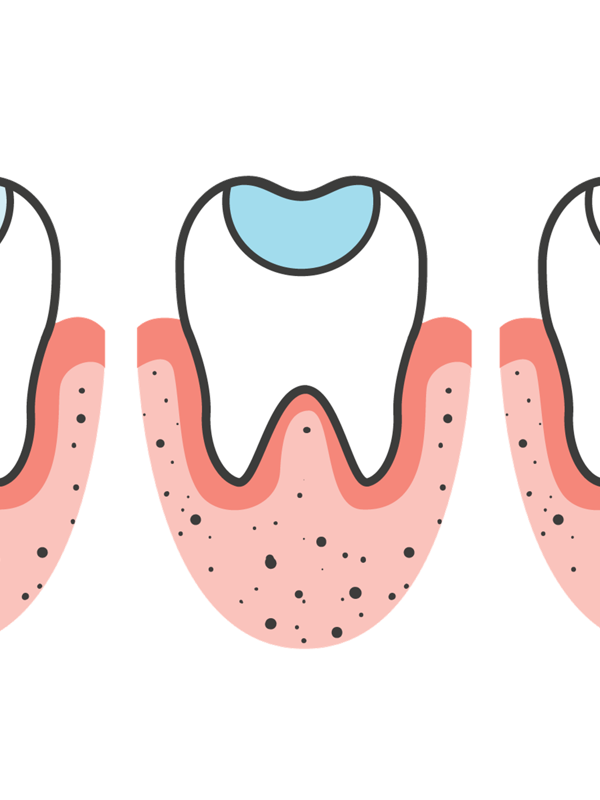Removing decay and repairing your tooth.
Don’t worry; you’re not alone: Australian adults have (on average) 11 decayed, missing or filled teeth.1 That’s a lot of fillings across the country!
In good news, regular trips to your dentist will help identify problem areas before they become cavities. And if you do have decay, they can treat it and repair your tooth, so you can walk out with a smile!
Let’s take a look at how your local dentists treat tooth cavities with fillings.
What are Fillings?
Fillings are material that your dentist will use to restore your damaged teeth to their normal shape and function.
Common signs you need a filling include:
- Sensitivity of the tooth to cold or sugary foods
- Toothache or pain, in or near the tooth
- A hole in the tooth that is visible to see or feel
We recommend visiting your dentist regularly for routine check-ups to identify any problem areas early. Tackling problems early means that treatment will be less invasive and more affordable.
What's the process?
Your dentist will first remove the decay from inside your tooth. Your dentist will use a local anaesthetic to numb the tooth and the surrounding area. To make you feel as comfortable as possible, your dentist will ensure you can’t feel anything when they remove the decay.
After the tooth has been prepared, we restore the tooth with a filling material. We’ll discuss which type of filling material might be best for you beforehand, which can depend on the extent of the decay, the location of the cavity, and your personal preference (e.g. price, appearance).
Types of Fillings
The type of filling your dentist uses to fill a cavity will depend on a few contributing factors. Your dentist will discuss all the options with you before your treatment.




Preparing for your dental filling appointment
Appointments for fillings
- Usually requires two appointments
- At the consultation, your dentist will examine your teeth
- At the next appointment, you will have the filling placed
- If you’ve opted for gold or porcelain fillings, these will require an additional appointment, as they require time to be made in the dental lab.
How long does it take to get a filling?
- The consultation and dental check-up usually takes 30 to 60 minutes.
- Getting the filing can take around 30 to 60 minutes
You may be asked about
- Your dental and medical history
- Your normal oral care routine at home
Before your appointment
No special preparation is needed
After your appointment
- Be careful not to bite your lips or cheek while they are still numb after your treatment
- Your dentist may tell you to avoid eating for a short time after your filling
- Maintain good oral hygiene habits between appointments
Quick tip
Your hygienist will give you advice about daily dental care like teeth brushing and flossing techniques.
FAQs
The cost of your filling depends on the material used to fill the cavity in your tooth. When you visit your dental clinic, they will let you know the price of your filling once they have examined your teeth.
Yes, if you do so early enough! It all comes down to taking care of your oral health with a combination of at-home dental care and building a regular relationship with your dentist or dental hygienist.
We recommend daily healthy habits and regular visits to the dentist. For a healthy smile and overall good oral health:
- Practice good oral hygiene habits at home, including brushing your teeth twice a day and flossing once a day
- Book routine hygiene & check-up visits with a dentist or dental hygienist, ideally every six months or as advised by your dentist
If, however, you’ve already got a cavity or decay, the damage may be done, and you may be unable to avoid a filling.
Your dentist will make sure you are as comfortable as possible for the duration of your visit. With local anaesthetic, you won’t experience any pain while getting a filling. At your examination, they can identify any problems in your mouth, discuss any symptoms you may have and recommend the best treatment. If you are experiencing tooth pain or sensitivity, we suggest you visit a dentist as soon as possible.
Dental anxiety can prevent some people from receiving the treatment they need to maintain a healthy mouth. If you're anxious about receiving dental treatment, you could consider dental sedation.
A few types of sedation are available, depending on the treatment you require. Talk to your dentist about the available sedation options.

